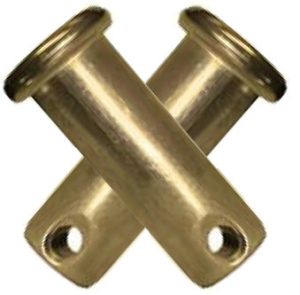
Clevis fasteners are used in many different industries, some of which include construction, agriculture, marine and manufacturing. Also known simply as a clevis, a clevis fastener is a multi-part fastening system. Among other things, it features a clevis pin. If you’re going to use a clevis fastener to secure a loan, you’ll need to install a clevis pin.
What Is a Clevis Pin?
A clevis pin is a rod-shaped component that’s used in a clevis fastener. As shown in the adjacent photo, it features a cylindrical shank with a protruding head on one end. At the end of the shank on the other end is a hole. The hole runs all the way through the clevis pin’s shank.
How to Use a Clevis Pin
To use a clevis pin, you’ll need to insert it through a U-shaped shackle. Clevis pins are used in conjunction with a U-shaped shackle and a cotter pin. The U-shaped shackle should feature a pair of circular openings. You can use a clevis pin by inserting it through these two circular openings at the end of the U-shaped shackle.
You’ll also need to secure the clevis pin using a cotter pin. Clevis pins, of course, have a hole in them. This hole is designed to accommodate a cotter pin. After inserting the clevis pin through a U-shaped shackle, you can place a cotter pin inside of this hole. The cotter pin will secure the clevis pin to the U-shaped shackle to prevent it from falling out.
Why Choose a Clevis Pin
There are other types of fasteners available, but clevis pins remain a popular choice for securing loads. They don’t restrict the movement of objects. Rather, clevis pins — along with their clevis fastening systems — allow for freedom of mobility. Objects can still move when connected to a clevis pin.
Threaded vs Unthreaded Clevis Pins
While most clevis pins are unthreaded, some of them are threaded. Unthreaded clevis pins have a smooth shank. Threaded clevis pins, on the other hand, have a threaded shank similar to that of a screw or bolt.
Another difference between unthreaded and threaded clevis pins is that the former requires a cotter pin, whereas the latter does not. You can use a threaded clevis pin without a cotter pin. The threading will secure it to the U-shaped shackle. Unthreaded clevis pins have a smooth shank, so they require a separate cotter pin during installation.
1
1



